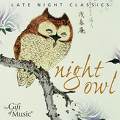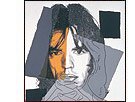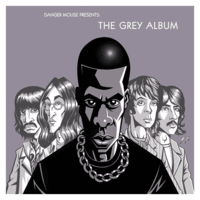I've been down this path before, but it's been a while...back to when my Dad was still alive and I was worrying about him...back when my Mom was still living at home and we all worried about dealing with her descent into Alzheimer's. Usually, after an hour or so of rolling around in bed, I'd get up and have a cup of tea and read for a while. Then I could usually get back to sleep. We'll see if blogging has the same effect.
 Sometimes, in the wee hours of the morning, the hooting of the neighborhood owls would keep me company. Not tonight...I checked.
Sometimes, in the wee hours of the morning, the hooting of the neighborhood owls would keep me company. Not tonight...I checked.Not sure what's got my brain in a spin cycle, but I decide I might need a night owl pic to accompany this post. I Google-search "night owl" and come up with a lot of pictures of night goggles and monoculars...not quite what I had in mind...but wait, there's more (in fact, pages more).
 I like this one, an album cover from some classical music company in the U.K. The blurb promises: "At the end of a long day, and on into the night, this lovely album of relaxing music will help banish those cares and worries and promote a calm and tranquil atmosphere."
I like this one, an album cover from some classical music company in the U.K. The blurb promises: "At the end of a long day, and on into the night, this lovely album of relaxing music will help banish those cares and worries and promote a calm and tranquil atmosphere."Hmm, sounds good...soothing even...but then my restless brain notices another offering, "Gentle Classics for an Indulgent Moment." Oh yeah, that should soothe the fevered brow.
But on I scroll, relentlessly, to the "Music for a Great Cook" collection, which bills itself as both "Baroque" and "cheerful music to cook by." Is such a thing even possible? This one offers "twenty-one tasty tracks (to) let the inspiration fall upon you as you chop and grind, boil and fry!" (I kid you not...could I make stuff like this up? I'm not that creative, especially not at this hour of the morning...though, on the other hand, there does seem to be something about the dark stillness of the early morning hours that allows unfettered brain farts to emerge without the censorship that usually accompanies broad daylight...and sometimes, it seems, the result is creative.)
 Onward. I notice a section called "Music for Gardeners." Hey, I'm a gardener! Gotta look. The headliner? It's "Music for a Lady Gardener," which offers a collection of "timeless musical souvenirs (that) will delight the lady gardener, and perhaps her husband too!" (And what century is this?)
Onward. I notice a section called "Music for Gardeners." Hey, I'm a gardener! Gotta look. The headliner? It's "Music for a Lady Gardener," which offers a collection of "timeless musical souvenirs (that) will delight the lady gardener, and perhaps her husband too!" (And what century is this?) And then, my favorite: "Music for a Great Garden." It's billed as "an album of fragrant songs and instrumental pieces" whose titles include 'Greensleeves,' 'Summer is acumen in' and 'Where the Bee sucks.'
Oh my.
And on that note, dear reader, I think I must leave you and try to get back to sleep. Good night.









